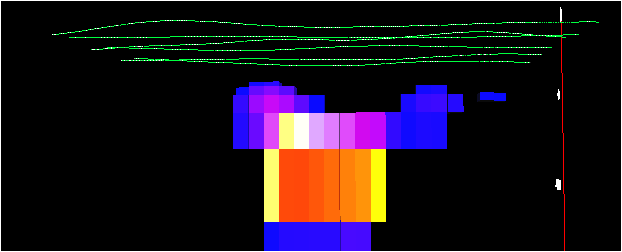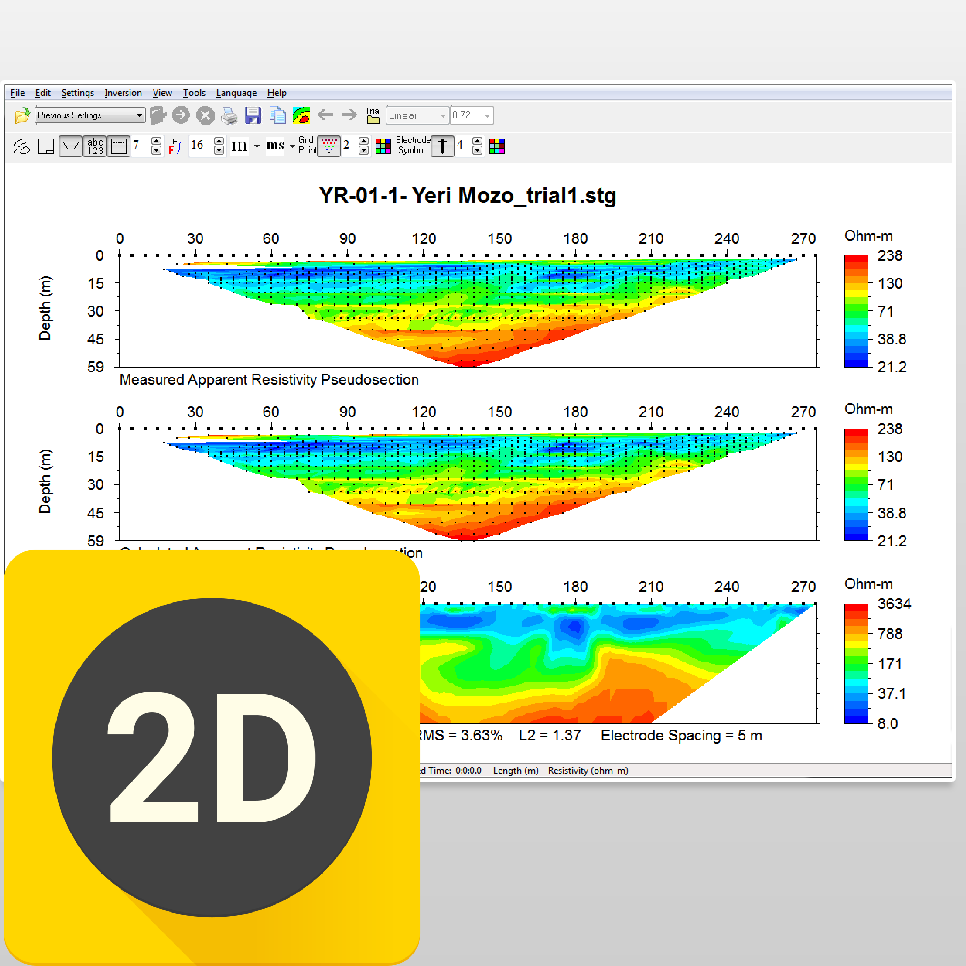

However, the joint inversion obtained with different survey line intervals varies in how precisely the objects are depicted. The 3D joint inversion imaging using multi-section resistivity data can effectively improve the recognition on the spatial forms of objects. When the interaction angle is less than 60°, there is a significant twisting of the bodies and the electrical response is obviously weaker. When the intersection angle is between 60° and 90°, the inverted forms of the anomalous bodies are unchanged. The results of this study indicate that the electrical response of cylindrical anomalous bodies tends to become weaker, first slowly and then faster, with a decrease in the angle. The intersection angles between 2D electrical survey lines and anomalous bodies as well as the relations between the 3D inversion characteristics and 2D electrical prospecting data for different line intervals were studied. Multiple sections of 2D electrical survey lines were laid and survey line data was acquired. This study established a physical model of an indoor water tank. However, the direction and interval between 2D electrical prospecting survey lines can affect the workload of field prospectors and the accuracy of the subsequent 3D inversion. This trend was generated by a progressive decrease in sediment supply stemming out from upstream migration of the knickpoints developed during the embanking of the axial system.A 3D joint inversion of 2D electrical prospecting data can effectively solve the shortcomings of the 2D electrical method in detecting the spatial forms of anomalous bodies. Alluvial-fan deposits of the Torrente Ciuffenna Synthem accumulated above the unconformity during a phase of tectonic quiescence, and show a fining-upward depositional trend. Such an erosional surface started to develop in the axial areas, and propagated along the main tributaries, triggering erosion of the alluvial fan deposits. This event caused a dramatic increase in water discharge of the axial fluvial system, and its consequent embanking. The basin-scale unconformity, which separates the Montevarchi and Torrente Ciuffenna synthems was due to the entrance of the Arno River into the basin as consequence of a piracy. fault activity) and the amount of sediment provided from the margin ii) a coarsening-upward middle interval, pointing to a decrease in subsidence rate associated with an augment in sediment supply iii) a fining-upward, upper interval (locally preserved), documenting a phase of tectonic quiescence associated with a progressive re-equilibration of the tectonically-induced morphological profile.

Alluvial fan deposits of the Montevarchi Synthem consist of three main intervals: i) a lower interval, which lacks any evidence of a depositional trend and testify balance between the subsidence rate (i.e. These deposits are sourced from the fault-bounded, NE margin of the basin and interfinger with axial fluvial deposits. The study alluvial-fan deposits belong to the two uppermost synthems (Montevarchi and Torrente Ciuffenna synthems) and are Early to Middle Pleistocene in age. The Upper Valdarno Basin, located about 35 km SE of Florence, is filled with 550 m palustrine, lacustrine and alluvial deposits forming four main unconformity-bounded units (i.e. Different phases of alluvial fan aggradation, progradation and backstep are discussed as possible effects of the interaction among fault-generated accommodation space, sediment supply and discharge variations affecting the axial fluvial drainage. The present study deals with the fault-sourced, alluvial-fan deposits of the Plio-Pleistocene Upper Valdarno Basin (Northern Apennines, Italy).


 0 kommentar(er)
0 kommentar(er)
